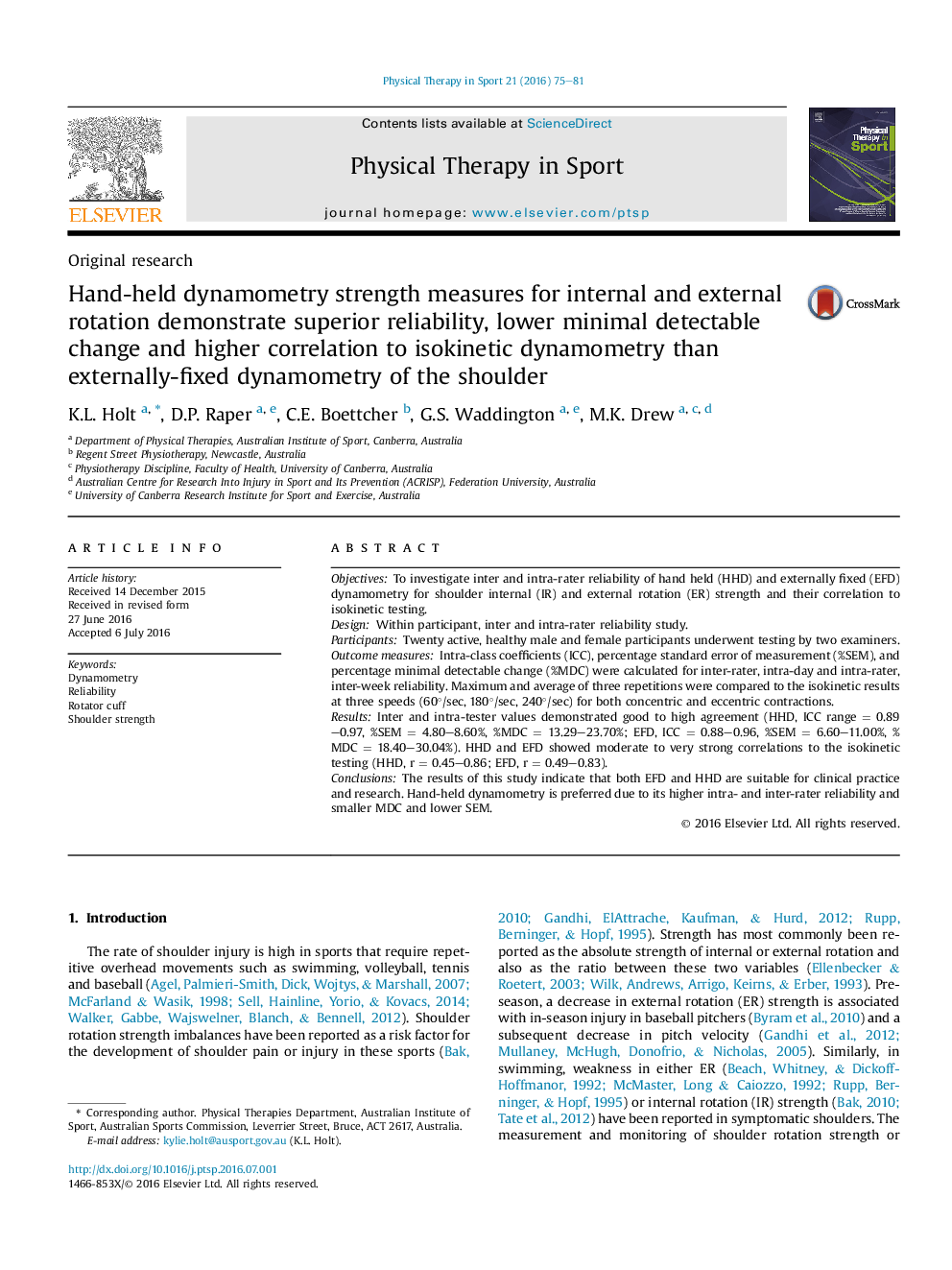| Article ID | Journal | Published Year | Pages | File Type |
|---|---|---|---|---|
| 5873654 | Physical Therapy in Sport | 2016 | 7 Pages |
â¢Hand-held and externally-fixed dynamometry for testing strength of IR and ER of the shoulder have good to high reliability.â¢HHD is superior to EFD due to both a smaller SEM and lower MDC.â¢EFD is an appropriate method when athlete or support staff have no experience in HHD to monitor shoulder strength changes.â¢Both methods of dynamometry had acceptable to very strong correlations to isokinetic testing.
ObjectivesTo investigate inter and intra-rater reliability of hand held (HHD) and externally fixed (EFD) dynamometry for shoulder internal (IR) and external rotation (ER) strength and their correlation to isokinetic testing.DesignWithin participant, inter and intra-rater reliability study.ParticipantsTwenty active, healthy male and female participants underwent testing by two examiners.Outcome measuresIntra-class coefficients (ICC), percentage standard error of measurement (%SEM), and percentage minimal detectable change (%MDC) were calculated for inter-rater, intra-day and intra-rater, inter-week reliability. Maximum and average of three repetitions were compared to the isokinetic results at three speeds (60°/sec, 180°/sec, 240°/sec) for both concentric and eccentric contractions.ResultsInter and intra-tester values demonstrated good to high agreement (HHD, ICC range = 0.89-0.97, %SEM = 4.80-8.60%, %MDC = 13.29-23.70%; EFD, ICC = 0.88-0.96, %SEM = 6.60-11.00%, %MDC = 18.40-30.04%). HHD and EFD showed moderate to very strong correlations to the isokinetic testing (HHD, r = 0.45-0.86; EFD, r = 0.49-0.83).ConclusionsThe results of this study indicate that both EFD and HHD are suitable for clinical practice and research. Hand-held dynamometry is preferred due to its higher intra- and inter-rater reliability and smaller MDC and lower SEM.
